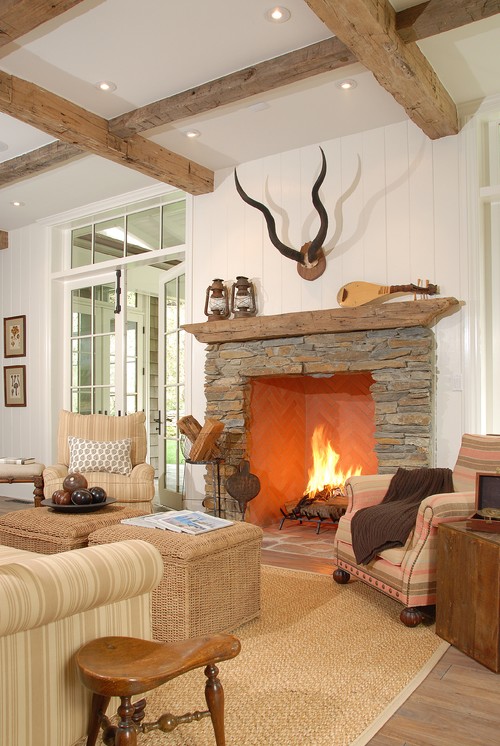10 Winter Family Friendly Events

Now that the holidays are here, we have compiled a list of winter family friendly events for you to enjoy around your area. Let the festivities begin, happy holidays!
Evergreen Christmas Light Show hosted by Evergreen Church
When: Dec. 4th-24th from 6:00-9:00pm
Where: 3429 240th St SE, Bothell, WA 98021
Cost: FREE!
The Evergreen Christmas Light show, hosted for the 10th year by Evergreen Church, is the perfect setting to drive out the Washington winter darkness. Eat Evergreen’s FREE famous chocolate chip and gingerbread cookies, while you warm yourself from a heated viewing area. The music choreographed light show lasts for 30 minutes and runs back-to-back from 6:00-9:00pm; from a tunnel light with a snowstorm that dusts every 30 minutes to a heated indoor train and village display there are plenty of photo opportunities along the way. For more information on the event and Evergreen’s Covid protocol please visit their website at: www.christmasatevergreen.com
The Lights of Christmas hosted by Warm Beach Camp & Conference Center
When: 2021 Dates: Dec. 1-5, 8-12, 15-23, 26-30 and Jan. 2-8, 2022
Where: 20800 Marine Drive, Stanwood WA 98292
Cost: 1-12 Person Vehicle $25-30 and Minibus or Limo $50-55
It is time to experience an old Snohomish holiday classic event in a new way. The Lights of Christmas, which launched 24 years ago in 1997, has undergone a transformation this holiday season. To keep patrons safe the event is now being run drive-thru style from the comfort of your own car. You can now view over a million dazzling lights from the warmth, comfort, and safety of your own car seat. Drive through to see Santa, Mrs. Claus, Frosty, Rudolph and Bruce the Spruce waving as you pass by. The viewing will last approximately 30 minutes and there will be designated locations to stop and use the restroom or purchase gifts and food. Don’t forget to tune in to LOC Radio 101.9 to enjoy Christmas music! For more information, please visit their website at: www.thelightsofchristmas.com
Pacific Ice Skating Rink hosted by the Port of Everett Marina
When: 2021 Dates: Dec. 3rd-Jan 31st. Monday-Friday 3pm-10pm Saturday and Sunday 10am-10pm. Holiday hours Dec. 17th- Jan. 2nd 10am-10pm
Where: 1028 13th St., Everett WA 98201
Cost: Adult $16.50 and Children (12 and under) $13.50
Skate your way into the 2021 holiday season at the Port of Everett’s newest opening attraction Pacific Ice. The 30-by-60ft rink is set to open December 3rd. Marvel at the lights and sights of the Marina while skating on real ice in a covered rink. For more information please their website at Pacific Ice at Waterfront Place (ticketspice.com)
Snowflake Lane presented by the Bellevue Collection
When: Nov. 26th- Dec. 24th
Where: On the sidewalks between Bellevue Square and Lincoln Square from NE 4th to NE 8th Street.
Cost: FREE!
Snowflake Lane’s magical parade is returning this year bringing with it free complimentary sights from character performances to floats, to lights and nightly snowfall. If you get there early enough you can utilize one of the free parking garages nearby and nab a prime viewing spot from either side of the sidewalk. For more information regarding the event and their masking and social distancing policies please visit their website at: https://snowflakelane.com
WILDLANTERNS at the Woodland Park Zoo
When: Nov. 12th- Jan. 30th. Closed Mondays (except Dec, 20th and Dec. 27th). Closed Dec. 24th-Dec. 25th
Where: Woodland Park Zoo 5500 Phinney Ave N, Seattle WA 98103
Cost: Adults $30.95 Children Ages 3-12 $29.95 Toddlers Ages 2 and under) FREE
Journey through an illuminated land full of larger-than-life lantern animals and lantern lit scenes from around the world. Wildlanterns, which replaced the Zoolights of old, is coming back for a second year bigger and brighter than ever before! The Zoo will be operating at full capacity in accordance with King County Covid mandates, so if you would like to find out more information about their Covid requirements please visit their website at: www.zoo.org/wildlanterns
Annual Issaquah Reindeer Festival at Cougar Mountain Zoo
When: Dec. 1st-23rd (10:30am-4:30pm) and Dec. 26th-30th (10:30am-3:30pm)
Where: Cougar Mountain Zoo: 19525 SE 54th St., Issaquah, Washington 98027
Cost: Adult $17. Senior $16. Children (ages 2-12) $14 Children under 2 FREE!
Santa’s team of reindeer have pranced their way into the annual Issaquah Reindeer Festival at Cougar Mountain Zoo. That’s right, you can see Santa and all of Santa’s reindeer live and in person in an intimate zoo setting. Tickets purchased for the Reindeer Festival also pay for your admission into the zoo itself. To get more information on the event please visit their website at: www.cougarmountainzoo.org/issaquah-reindeer-festival
Zoolights at Point Defiance Zoo and Aquarium
When: Nov. 26th- Jan. 2nd (4:30-10pm)
Where: Point Defiance Zoo & Aquarium: 5400 North Pearl St., Tacoma, WA 98407
Cost: Mon-Thursday $12. Fri-Sunday $15. Children 2 and Under FREE! Parking is FREE!
Zoolights at Point defiance zoo is brining back old festive classics like their 33-year-old purple and green Flame Tree and new displays too! Boasting over 800,000 dazzling lights Zoolights is sure to be a crowd pleasure. There will be opportunities for animal encounters in the Asian Forest Sanctuary Day Room and Goats that you can feed over in Contact Junction! Zoolights has been reimagined to help with social distancing and will enforce safety guidelines in accordance with Covid-19 mandates. For more information on the event please visit their website at: www.pdza.org/event/zoolights/2021-12-07
Garden d’Lights hosted by Bellevue Botanical Garden
When: Nov. 27th-Dec. 31st including Christmas Eve, Christmas Day and New Year’s Eve (4:30-9:00pm)
Where: Bellevue Botanical Garden: 12001 Main Street, Bellevue, 98005
Cost: $5.00 per person, 11 years and over; Children 10 and under are FREE!
Garden d’Lights features over half a million glistening lights formed to resemble the creatures and plants that you would expect to find in a botanical garden. The light display is spread across 3.5 acres and is entirely outdoors so there will be no proof of COVID vaccinations or negative COVID test results required to attend. For more information on the event please visit their website at: https://bellevuebotanical.org/garden-dlights
George Balanchine’s The Nutcracker presented by Pacific Northwest Ballet
When: Nov. 26th-Dec. 28 (showtimes vary & last 2 hours & 3 minutes)
Where: 301 Mercer St., Seattle, 98109
Cost: Prices vary depending on your seat selection
Watch as snowflakes flit, twirl, and dance across a stage at the Pacific Northwest Ballet’s performance of George Balanchine’s The Nutcracker. This heartwarming production will take you on an epic journey from a young girl’s ordinary home to the Land of Snow and Sweets. This year you can even purchase digital access and enjoy the performance from the comfort of your own home! For more information on this event please visit their website at: www.pnb.org
Holiday Magic hosted by Washington State Fair
When: Dec. 10th-12th, 17th-23rd and 26th-31st (5:00pm-10:00pm)
Where: Washington State Fair Grounds: 110 9th Ave SW, Puyallup, 98371
Cost: $5.00 per person, 11 years and over; Children 10 and under are FREE!
There are MANY merry activities you can experience at Holiday Magic. You and your family can hang out in ChillVille, go ice skating, ride Santa’s Express Train, visit Santa’s Village or hang out with cuddly animals in The Manger and so much more! Activities will be indoor and outdoor at this fun filled extravaganza! For information more information including their COVID protocols please visit their website at: www.thefair.com/holiday-magic
written by Kerriann Jenkins
Winter Reading List

These are my reading picks through the Winter. I hope you enjoy them along with other reading options through Sno-Isle Libraries which is open for in person services. All online services and resources continue to be available as well. Visit there site here, www.sno-isle.org/mill-creek
Before the Ruins by Gosling, Victoria
“It’s the summer of 1996 and school’s out forever for Andy, her boyfriend Marcus, her best friend Peter, and Em. When Andy’s alcoholic mother predicts the apocalypse, the four teenagers decide to see out the end of the world at a deserted manor house, the site of a historic unsolved mystery. There they meet David – charming and unreliable, he seems to have appeared out of nowhere. David presents an irresistible lure for both Andy and Peter and complicates the dynamics of their lifelong friendship. When the group learns that a diamond necklace, stolen fifty years ago, might still be somewhere on the manor grounds, the Game – half treasure hunt, half friendly deception – begins. But the Game becomes much bigger than the necklace, growing to encompass years of secrets, lies, and, ultimately, one terrible betrayal.”
Bad River by Cotton, Ralph W.
Arizona Ranger Sam Burrack is back-and hot on the trail of the worst desperados in two countries. Following a tip from a prisoner in Yuma Penitentiary, Ranger Sam Burrack is riding to the Mexican Valley to hunt down the Cowboy Gang, notorious bandits who have topped the Most Wanted list for the past year. The crooks have fled to Rio Malo and settled in under the protection of corrupt town officials. Now, with new recruits including the infamous Russian assassin Kura Stabitz, they’re robbing banks and trains on both sides of the border.
I hope you enjoy the books I have chosen for you to read. Visit www.sno-isle.org/mill-creek to view other wonderful books that are available. All online services and resources continue to be available. Sno-Isle Libraries are offering in-building services. Visit there site here, www.sno-isle.org/mill-creek
written by Chasity Rodriguez
Social Media Director
November Artist of the Month

Every Month our office holds space for an Artist of the Month. We display their work at our Mill Creek Town Center location for the whole month. Its a great opportunity for the artist! We love supporting our community and this is just one way of showing how much we love it.
This month for November we have an artist by the name of Jim Schleis. He specializes in acrylic painting and loves to add texture, depth and liveliness to each one of his canvas he creates. Jim was born in 1939 in Manitowoc, Wisconsin. He started his artistic endeavors in the ‘50’s with painting, pottery, and stagecraft projects. He started with water colors but is exclusive to only acrylic medium. He only paints subjects he has personally seen and photographed, most often using landscapes or tourist subjects observed while traveling. His paintings portray subjects found in the United States, England, Germany, Holland, and Turkey. Jim has a theatrical background in over 100 productions including scenery design, scenery and set construction, scene painting and decoration, lighting design and execution, and technical direction. He has participated in many workshops becoming a mentor and tutor to art teachers and young aspiring artists along the way. His work has been shown at the Bothell Arts Fair and in the High Country Artists associates members art shows at the Carpenter House Museum in Cle Elum and various other venues in Kittitas, King, and Snohomish counties. You can visit his website to view more of his incredible work at jimschleisart.com.
Social Media Director
Blog written Chasity Rodriguez
Best Bakeries To Visit

If you live in the Mill Creek area you know we have an awesome selection of food choices but did you know we also have some really great local bakeries too! I have compiled a list of some of the Best Bakeries To Visit!
Mon Amie Bakery – 914 164th ST SE Suite B8, Mill Creek
“Mon Amie” means ‘my friend,’ in French, and began with a love for baking, coffee, and France. They serve pastries, cookies, desserts, breads, breakfast and lunch! They use the finest and freshest local ingredients prepared daily. Hungry for more….. they have delicious sandwiches made on fresh baguettes and croissants, tasty salads, and hearty soups made from scratch. You will also have to try there slow roasted gourmet coffee, provided by Pegasus (since 1979). The founder and roaster of Pegasus coffee, David Dessinger, only chooses the best coffee beans and roasts from our own Bainbridge Island. He has been diligent about this the past 34 years, and will not settle for any less!
Bequest Coffee Co. – 15111 Main St, Unit A105, Mill Creek
Bequest Coffee Co is a family-owned coffee shop that serves much more than coffee! The owners are passionate about connecting with people and loves helping customers connect with their brand and products. They offer a number of goodies like acacia bowls, smoothies, breakfast sandwiches and omelets, paninis, homemade pastries including cookies, scones, banana bread and cinnamons rolls. They also have a very extensive Happy Hour Menu as well with salads, small bites and flatbreads! You can enjoy a nice glass of wine or beer on tap. You will feel like family when you walk in to be greeted by staff.
Frost – 15217 Main Street, Mill Creek
Frost donuts located in the Mill Creek Town Center is Voted Seattle’s Best Doughnut by Seattle Metropolitan Magazine. They have featured donuts, macaroons, and their Bespoke Coffee Roast. They also offer a luncheonette menu. Perfect for a grab n go breakfast or lunch sandwich, pancakes, French toast, and omelets. You will be hit with a sweet smell when you walk in.
L’Artisan French Bakery and Café – 11419 19th Avenue SE B103, Everett
L’Artisan French Bakery and Café offers Fabulous French breads, cakes, tarts, and pastries made in the true French tradition where beauty meets taste. Bon Appétit! They have sandwiches too if you want to grab a quick lunch. Definitely have to try them if you are in the area!
Hill Crest Bakery – 10010 Main St, Bothell
Hillcrest Bakery was started by the Kaskes Family. They began a baking tradition that continues through present day now in two countries. The Kaskes Bakery is still flourishing in The Netherlands as are we here at Hillcrest Bakery in the United States. Today they have three generations working at Hillcrest Bakery. They offer Dutch and European Pastries, breads, cookies and specialty cakes.
written by Chasity Rodriguez
Social Media Director
Fall Reading List

These are my reading picks through the Fall months. I hope you enjoy them along with other reading options through Sno-Isle Libraries which is open for in person services. All online services and resources continue to be available as well. Visit there site here, sno-isle.org
How to be Fearless in 7 Simple Steps by Hagy, Jessica
“A visual infographic self-help book from the Seattle-based master of the venn diagram, Jessica Hagy, author of How to Be Interesting. This book empowers readers to see themselves as capable and powerful even when beset by worry and worrying messaging”–
Evidence Not Seen by
The True story one one woman’s triumph of faith. Newlywed American missionary Darlene Deibler Rose survived four years in a notorious Japanese prison camp set deep in the jungles of New Guinea. Thinking she was never to see her husband again, Darlene Rose was forced to sign a false confession and face the executioner’s sword, only to be miraculously spared.
I hope you enjoy the books I have chosen for you to read. Visit sno-isle.org to view other wonderful books that are available. All online services and resources continue to be available. Sno-Isle Libraries are offering in-building services. Visit there site here, sno-isle.org
written by Chasity Rodriguez
Social Media Director
Free Things You Can Do Today to Get Ready to Buy a Home

The path to homeownership is a marathon, not a sprint if we can help it. If you’re months (or maybe even years) away from being ready to own, there are still things you can start doing today to help you on your path to becoming a homeowner. And they’re all free, there’s nothing to stop you from getting started right now.
Find the perfect agent.
The best advice for people who are currently unable to purchase a home would be to plant some seeds in the homebuying process. You have to start somewhere, right? The first step is to find an agent who is patient and willing to work with you while you figure out your finances. Some buyers purchased up to three years after the initial introduction, so it’s always best to find an agent who is patient.
Talk to a lender.
While you’re getting set up with an agent who is comfortable being with you for the long haul you should also be reaching out to a mortgage lender. They will walk you through the process including what you’ll be able to reasonably afford, how much you’ll need to be saving for a down payment, and what you’re looking at when it comes to closing costs.
Set some goals.
Now you have a good understanding of what you might be able to afford, how much money you need to save, and how much debt you need to pay off. Now start “window shopping” with your agent. Select the neighborhood, bedroom and bathroom count, and of course the budget to see what type of home you can get in your preferred area. Make a list of homes you want to see but do most of it virtually, if something catches your eye then write it down as a must see.
Don’t get attached.
Spending every weekend cruising open houses or getting attached to any one property is not going to help. The beauty of working with a good agent is that window shopping is a great way to save time, view apartments and homes virtually. If one really catches your eye that fits the budget, it doesn’t hurt to view in person to get a better understanding of the market.
Ignore listing prices and focus on the final sales price.
Keeping an eye on the market is key because some homes aren’t listed anywhere near what their actual selling price will be, which can give hopeful buyers the wrong idea about how much house they can actually get with their budget. Some homes and apartments are priced low to gain traction and ultimately end up in a bidding war so it’s good to know what they actually sell for as data points to use when ready to start looking and submitting offers.
blog post by Chasity Rodriguez
Social Media Director
Features To Never Touch When Renovating Your Home

No matter what type of renovation project you’ve got planned, it’s smart to put down the hammer when it comes to removing, painting over, or otherwise altering certain features. Sure, the feature might look like an eyesore at first glance, but with some work, it could end up adding character, charm, and make it unique.
Here are common features that homeowners should consider leaving untouched, or even restore to their former glory.
Mantels or exposed beams
Under layers and layers of previous homeowner paint, you may find salvageable wood that today’s homeowners are seeking. With some elbow grease, these beautiful pieces of timber from the past can be uncovered, sanded, and stained. An original wood mantel that you decide to strip may even fit perfectly on your newly updated fireplace, saving you even more money.
Original hardwood flooring
Original flooring can be refinished, which can be a huge cost saver. Also, since the wood floor is already in place, it can be stained to your preference. Before you start any flooring projects, get a look under your current flooring. Have your contractor lift up every layer until you come to the subfloor. This is the only way to be sure someone hasn’t covered up attractive hardwood.
Millwork like rosettes, crown molding, and ceiling medallions
Before you wield the pry bar on door and window trim, baseboard, or crown molding, take a look at what you have. You may be able to preserve period craftsmanship like rosettes, fancy pediments above doors, and details as ceiling medallions. You may be able to reuse a ceiling medallion in your dining room, or save casings, trim, or moldings with elements like rosettes to reuse. Consider restoring or repurposing these artisan treasures to show off.
Banquettes and butler pantries
Features like butler pantries and banquettes (built-in bench seating) may hail from decades past, but homeowners are opting for many of these formerly dated details. You may not have a butler, but a butler pantry makes a fabulous coffee station. Meanwhile a banquette can be updated for use in an off-the-kitchen office space, breakfast nook, or kids crafts area.
Pocket doors, doorway arches, and rounded stairs
Pocket doors (which slide rather than swing open) were seen as early as the 1850s. So were doorway arches and rounded stairs. These architectural elements later disappeared, due to changing tastes. Lately, however, builders are adding these features again in new homes.
Crown glass and stained glass
If you have special glass, like crown glass (hand-blown in the 19th century into small diamonds or square panes) or stained glass ( popular in the 1850s), every effort should be made to preserve these gems. Preserving old glass does take a professional for anything other than cleaning, but it’s well worth the investment. You can also relocate these windows to a bathroom or entryway, or even inside your home, for a pop of nostalgic color.
In sum, every period detail or element you find in your home merits a the question, “What can I do with this?”
blog post by Chasity Rodriguez
Social Media Director
Tips For Amping Up Your Home Security While On Vacation

We all look forward to vacations for months, and it’s maybe the only opportunity to enjoy a few consecutive stress-free days away from the typical day-to-day pressures of work and life. You’ll want to make sure that while you’re away, your home is safe and secure.
The most obvious option is to invest in some high-end home security devices; however, those can be very pricy, and wouldn’t you rather put that money toward your getaway instead? If so, we’ve got you covered with five tips that you can use to increase the security of your home while you’re on your next vacation.
1. Set Your Lights on a Timer
Having lights on in your home is one of the most obvious indicators that the home is not empty. However, if you’re planning to go away for several days, or several weeks at a time, keeping the lights on for the entire duration of your trip is not only going to drive your electric bill through the roof, but it’s also dangerous as it poses a risk for fires.
Light timers are a great and cost-effective way to increase the security of your home while you’re away. You can set the timers to automatically turn your lights on and off at the same times that they typically would be if you were home. You can set up a few throughout the different floors of your home so it appears that people are around and occupying both the upstairs and downstairs.
2. Have a Friend Check in on Your Home
If you’re going to be away for more than a day or so, a smart idea is to have a trusted friend or neighbor come by to check up on your home a couple of times. Not only will this help to ensure that everything is right within your home, but it will also bring some motion and human presence to your house.
3. Keep a Car in the Driveway
Unless you have to use your car to get to your vacation destination, leaving it parked in the driveway can be a a great option for increasing your home’s security while you’re not there. It’s all about creating the illusion that someone is home, even when that’s not the case. Although you might be planning to use your car to drive to where you’re going. If that’s the case, a good alternative is to ask a nearby friend or neighbor if they would be willing to park their car in your driveway while you’re away. To sweeten the deal, offer to pay for their next carwash when you get back.
4. Be Mindful of Your Curtains and Blinds
If you typically keep your blinds closed throughout the day, keep them closed while you’re away. However, if it’s more common for you to leave them open for the majority of the day, mimic this while you’re gone, and make the choice to keep them open. The recurring theme here is doing little things in order to generate the impression that you’re still home, so consider leaving your curtains and blinds in a position that is more like how they are on a normal daily basis.
5. Create a Decoy Security System
By putting up decoy security signs, stickers and even imitation cameras in plain sight, you’re increasing your chances of deterring trespassers from trying to enter your home or approach your property. If it looks like a security system is installed, and it’s not hidden, it’s unlikely that someone would try to break in if they saw it.
While we don’t recommend this as your only means of protecting your home but by putting up decoy security signs, stickers and even imitation cameras in plain sight, you’re increasing your chances of deterring trespassers. If it looks like a security system is installed, and it’s not hidden, it’s unlikely that someone would try to break in if they saw it. This should help to give you the peace of mind that you need in order to enjoy your vacation and know that your home will be adequately safe and secure until you return back.
blog post by Chasity Rodriguez
Social Media Director

 Facebook
Facebook
 X
X
 Pinterest
Pinterest
 Copy Link
Copy Link














